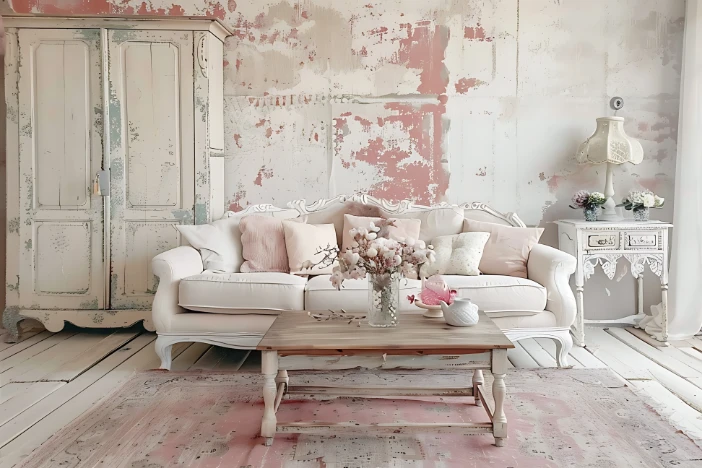
Exploring the hybrid style of shabby chic
Shabby chic is a term frequently tossed around the interior decorating world, but what exactly makes up this popular style? In short, it’s a blend of Baroque glamour and rustic charm. It’s comprised of antique furniture, distressed finishes and shiny ornate accents. Often called French country, the aesthetic is a bohemian movement that’s in demand by the hip, young and fashionable. It’s an expression of overall lifestyle as much as a choice in decor.
To fill your home with this versatile aesthetic, you must mix the right elements. Our comprehensive overview of this light and refreshing design approach will help you understand what makes up shabby chic style. We cover its history and how you can integrate it into your home.
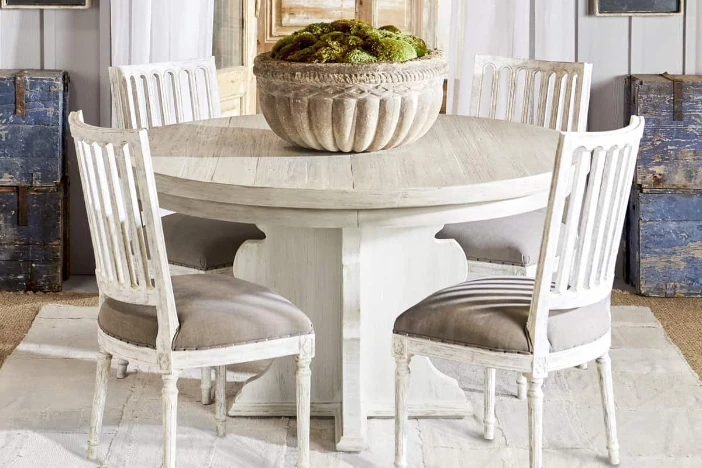
How did shabby chic begin?
The history of this blended look is not nearly as rich as its exuding charm. It’s relatively new to the world of interior design. However, its founding roots stem from designers’ appreciation of purity, raw beauty and historical value.
Origins of the simple yet elegant style
The term “shabby chic” was coined by a newly launched magazine in the 1980s called World of Interiors. According to the Daily Mail’s founding editor, Min Hogg defined shabby chic as, “characterful, colourful, used but not abused.” She believed the look was influenced by the habit of many ’80s homes to collect overflowing quilts and mix-and-matched fabrics.
In the 90s, this embrace of mismatched vintage items carried over into the world of fashion. Avant-garde Belgian designer Martin Margiela introduced a memorable Fall collection in a Salvation Army. The runway show featured models sporting wrinkled clothing with exposed linings and unfinished hems. Newsweek’s coverage of the event announced that, with the audience’s approval of the frayed style, “Shabby chic had arrived.”
While it may have modern influences, the style has roots in the large country houses of Great Britain. These homes were decorated with airy curtains, faded sofas, weathered wood tables and vintage accents. In the early 1900s, many of these houses were abandoned and left with contents still inside. The owners faced difficult financial times and felt they had little recourse. Over time and through seasonal changes, the furniture became worn. This natural aging was the inspiration for the weathered look we see today.
Rachel Ashwell launches shabby chic into popularity
The hybrid aesthetic took the design world by storm with the help of London-born stylist Rachel Ashwell. For the past 25 years, Ashwell has been developing the definition for this design with her brand, Shabby Chic Couture. Her interior design line began for practical reasons. She had slipcovers made for her couch so cleaning messes made by her two small children would be easier. She realized there was a demand for worn furniture after friends asked where she found such unique pieces.
The business started as a small store in which Ashwell sold slipcovered furniture and items gathered from flea markets. It has since turned into a widely popular style and brand, with five stores throughout the U.S. She hand-picks each product her stores sell, from artisan-crafted chandeliers to custom-made couches. She opened an impressively quaint bed and breakfast in Texas in 2011. It features elegant rooms that exude the imperfect beauty of the shabby-chic style.
The popularity of this French Country style also came from 1980s homeowners’ desire to demonstrate class and refinement in their decor. Incorporating this style into their homes allowed them to boast interesting vintage pieces that told a unique story.
Prime examples you can visit
Nothing conveys the charm and beauty of this design aesthetic like seeing it in person. Here are a couple of iconic places to check out:
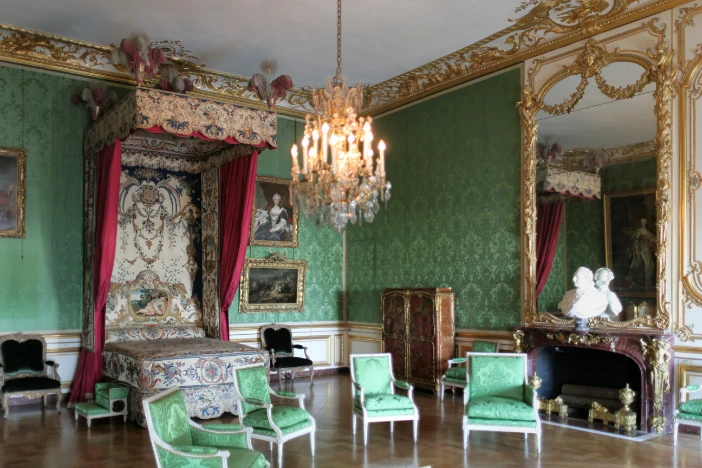
Palace of Versailles
Most of the well-known structures related to the shabby chic style were only partial contributors to this relatively new look. The grandeur of Louis XIV’s castle in Versailles is a major Baroque influence. However, it doesn’t touch on the more pure, rustic elements.
The Prairie
Ashwell’s Texas bed and breakfast, The Prairie, may best capture the shabby chic design. The Prairie sprawls across 46 acres of open land in Round Top, Texas. Its large size takes nothing away from the quaint aura of this wisteria tree surrounded bed and breakfast.
According to The Prairie’s website, the once run-down location was restored with a labor of love. Ashwell turned the vintage venue, tacked up with recycled materials, into a five-house bed and breakfast. She was careful not to disrupt the beauty of footpaths and hand-crafted elements of previous owners. Guests can relax on the comfy shabby chic furniture from her boutiques that fill every room. Or, they can enjoy a meal in dining rooms with corrugated galvanized steel ceilings and bleached wood plank walls. Dazzling crystal and hand-painted chandeliers hang from above and original farmhouse floorboards lay beneath.
The Prairie’s outdoor spaces also reflect this timeworn look. Weathered porch swings and chipped paint rocking chairs adorn the porches. Wrought iron bistro tables and chairs create small intimate spots in the various nooks and crannies of the property. There are even rustic patio lounge sets beneath simple pergolas with string lights for relaxing under the sun or stars.
Looking deeper into the style’s inspirations
Now that you know a little of shabby chic’s beginnings, it’s time to delve into its inspirations, features and how to achieve the look. Read through the other sections of this guide for additional insight.
Guide Sections
Frequently Asked Questions – Shabby Chic
What is shabby chic?
Shabby chic is a popular decor style made famous by interior designer Rachel Ashwell with the following characteristics:
- Vintage furniture and lighting
- Blend of rustic and ornate styles
- Mismatched items and eras
- Distressed and weathered surfaces
- Neutral backgrounds with a soft pastel palette
- Ornately carved curves and accents
- Shiny metallic details
- Feminine essence
- Lace and natural fibers
- Natural motifs and live plants

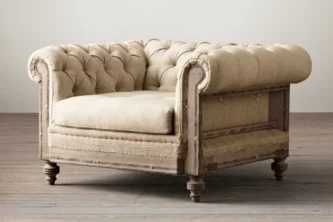
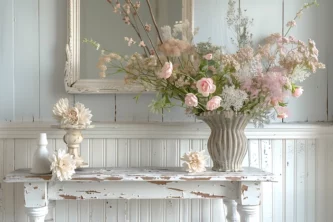
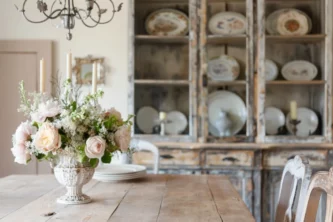




The origins are so interesting. Who knew!